Vinayak Agarwal, chemistry, Georgia Institute of Technology – Unlocking Marine Eukaryotic Natural Product Biosynthetic Schemes in Research and Education
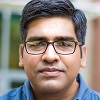 “Small organic molecules, called natural products, are alphabets in the language of life. By making and exchanging natural products, life forms interact, compete, and help each other. This research seeks to decipher this language in the marine environment. The marine environment, particularly the seabed, is a site for intense biotic competition and intricate interactions among organisms. It is also where some of the most chemically complex natural products are constructed using biological catalysts -- gene encoded enzymes. This award will enable my lab to continue their work interrogating the biogenetic routes that marine eukaryotic organisms such as marine sponges and seagrasses use to construct natural products. These eukaryotic organisms have traditionally missed the attention of geneticists and biochemists because sequencing and mining their large and complex genomes were difficult using contemporary technologies. Using rationalized biosynthetic schemes that guide the mining of eukaryotic transcriptomes, my lab is developing new workflows to sidestep the eukaryotic genetic complexity and enable the discovery of genes and enzymes that construct complex natural products in marine eukaryotic metabolomes. We are also bringing this work to the classroom by developing new curricula in which undergraduates isolate new bacterial strains from marine matrices and inventory the novel natural products they make, pairing the discovery of these new-to-science bacteria with cutting-edge mass spectrometry technologies. By exposing the undergraduate community to new research directions, we aim to enhance their STEM-based career development and retention in postgraduate STEM education.”
“Small organic molecules, called natural products, are alphabets in the language of life. By making and exchanging natural products, life forms interact, compete, and help each other. This research seeks to decipher this language in the marine environment. The marine environment, particularly the seabed, is a site for intense biotic competition and intricate interactions among organisms. It is also where some of the most chemically complex natural products are constructed using biological catalysts -- gene encoded enzymes. This award will enable my lab to continue their work interrogating the biogenetic routes that marine eukaryotic organisms such as marine sponges and seagrasses use to construct natural products. These eukaryotic organisms have traditionally missed the attention of geneticists and biochemists because sequencing and mining their large and complex genomes were difficult using contemporary technologies. Using rationalized biosynthetic schemes that guide the mining of eukaryotic transcriptomes, my lab is developing new workflows to sidestep the eukaryotic genetic complexity and enable the discovery of genes and enzymes that construct complex natural products in marine eukaryotic metabolomes. We are also bringing this work to the classroom by developing new curricula in which undergraduates isolate new bacterial strains from marine matrices and inventory the novel natural products they make, pairing the discovery of these new-to-science bacteria with cutting-edge mass spectrometry technologies. By exposing the undergraduate community to new research directions, we aim to enhance their STEM-based career development and retention in postgraduate STEM education.”
Jeanine Amacher, chemistry, Western Washington University – Investigating Sortase Enzyme Activity and Specificity Using Natural Sequence Variation and Ancestral Sequence Reconstruction
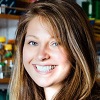 “The human genome encodes over 20,000 proteins that act as central components of cellular processes in a tissue- and cell-specific manner. These proteins contain the same 20 amino acids, or building blocks, arranged in different ways and over varying lengths. Because structure imparts function for proteins, the specific amino acid sequence of each of these proteins determines not only its fold, but how it acts in the cell, which other proteins it interacts with, and how it is regulated. Therefore, two proteins that contain the same structural element but with different sequences could function very differently from each other. My lab uses bacterial sortases to investigate how sequence differences in a structurally conserved loop near the active site of the enzyme can dramatically affect its activity and selectivity. We previously used chimeric loop-swap variants of Class A sortases from several Streptococcus proteins, as well as Staphylococcus aureus for this work. With this award, my lab will perform protein biochemistry and structural biology experiments to test whether this conserved loop plays a similar role in other classes of sortases, e.g., those from Classes B-F. Considering the use of sortase enzymes in protein engineering applications via sortase-mediated ligations, this work has the potential to substantially contribute to several fields of research. In addition, we intend to promote more diverse, equitable and inclusive student recruitment by hosting and organizing a regular Life Sciences Symposium for students from local institutions, providing access to near-peer mentoring from PhD students and postdocs. We will also create a lower-division elective course introducing students to research at Western Washington University.”
“The human genome encodes over 20,000 proteins that act as central components of cellular processes in a tissue- and cell-specific manner. These proteins contain the same 20 amino acids, or building blocks, arranged in different ways and over varying lengths. Because structure imparts function for proteins, the specific amino acid sequence of each of these proteins determines not only its fold, but how it acts in the cell, which other proteins it interacts with, and how it is regulated. Therefore, two proteins that contain the same structural element but with different sequences could function very differently from each other. My lab uses bacterial sortases to investigate how sequence differences in a structurally conserved loop near the active site of the enzyme can dramatically affect its activity and selectivity. We previously used chimeric loop-swap variants of Class A sortases from several Streptococcus proteins, as well as Staphylococcus aureus for this work. With this award, my lab will perform protein biochemistry and structural biology experiments to test whether this conserved loop plays a similar role in other classes of sortases, e.g., those from Classes B-F. Considering the use of sortase enzymes in protein engineering applications via sortase-mediated ligations, this work has the potential to substantially contribute to several fields of research. In addition, we intend to promote more diverse, equitable and inclusive student recruitment by hosting and organizing a regular Life Sciences Symposium for students from local institutions, providing access to near-peer mentoring from PhD students and postdocs. We will also create a lower-division elective course introducing students to research at Western Washington University.”
Jeffrey Bandar, chemistry, Colorado State University – Salt-Promoted Electron Transfer Processes for Reductive Cross-Coupling Reactions
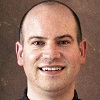
Rachel S. Bezanson, astronomy, University of Pittsburgh – Building Bridges in the Steel City: Leveraging the Nearby to Follow Galaxies Across Cosmic Time
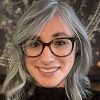 “Understanding how galaxies form and grow throughout cosmic time requires simultaneous analysis of a vast array of datasets, from detailed maps of the nearby universe to glimpses of the youngest galaxies in the distant universe. For this project, my team will build outwards, leveraging the detailed multidimensional maps of nearby galaxies to simulate current and future observations of galaxies in the distant universe. By moving the nearby further away, these mock observations will facilitate fair comparisons between diverse datasets to robustly characterize how populations of galaxies evolve through cosmic time and reveal the physical processes driving that evolution. Furthermore, this project will leverage the wealth of existing and planned data, like those provided by the James Webb Space Telescope, to optimize community use of this invaluable but limited resource and to prepare for future observations. In a parallel effort, I will be rethinking undergraduate and graduate student mentoring and bolstering the nascent APS Bridge Program within the Physics and Astronomy Department at the University of Pittsburgh. Our goal is to recruit a strong cohort to significantly increase the number of physics degrees awarded to students from underrepresented minority groups and create a strong mentoring framework to support and launch their professional careers.”
“Understanding how galaxies form and grow throughout cosmic time requires simultaneous analysis of a vast array of datasets, from detailed maps of the nearby universe to glimpses of the youngest galaxies in the distant universe. For this project, my team will build outwards, leveraging the detailed multidimensional maps of nearby galaxies to simulate current and future observations of galaxies in the distant universe. By moving the nearby further away, these mock observations will facilitate fair comparisons between diverse datasets to robustly characterize how populations of galaxies evolve through cosmic time and reveal the physical processes driving that evolution. Furthermore, this project will leverage the wealth of existing and planned data, like those provided by the James Webb Space Telescope, to optimize community use of this invaluable but limited resource and to prepare for future observations. In a parallel effort, I will be rethinking undergraduate and graduate student mentoring and bolstering the nascent APS Bridge Program within the Physics and Astronomy Department at the University of Pittsburgh. Our goal is to recruit a strong cohort to significantly increase the number of physics degrees awarded to students from underrepresented minority groups and create a strong mentoring framework to support and launch their professional careers.”
Laura Blecha, physics, University of Florida – The Making of a Gravitational Wave Source: Probing the Role of Galaxy Assembly in Black Hole Binary and Triple Formation
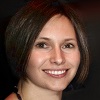 “In 2015, the discovery of gravitational waves from colliding black holes sparked a revolution in astrophysics, and subsequent detections of these ripples in the fabric of spacetime have opened a whole new window to the universe. We now stand on the cusp of another unexplored frontier: gravitational wave detections from interactions and mergers between supermassive black holes. These monster black holes, which are millions to billions of times more massive than the sun, lurk at the center of most galaxies. When they collide following a cosmic merger between two galaxies, they produce gravitational waves that should be detectable throughout most of the observable universe. Ongoing and future experiments could detect these powerful gravitational waves in the near future, but there is still a great deal of uncertainty about how often and how efficiently these supermassive black hole collisions occur. Moreover, some black hole pairs may stall during their inspiral long enough for a third black hole to enter the system, further complicating their evolution. This project will use large-scale hydrodynamics simulations to constrain the role of galaxy assembly in the formation of black hole pairs and triples, and to predict the resulting population of gravitational wave sources. We will employ a novel methodology to achieve ultra-high resolution near the black holes within a state-of-the-art model for star formation and the gaseous interstellar medium. To prepare the next generation of students for success in the STEM workforce (focusing particularly on increasing participation of students from underrepresented minority groups) we will expand an existing summer computing program and provide scholarships for underrepresented minority high school students, and we will implement an undergraduate computational physics curriculum as well as research opportunities for undergraduate students.”
“In 2015, the discovery of gravitational waves from colliding black holes sparked a revolution in astrophysics, and subsequent detections of these ripples in the fabric of spacetime have opened a whole new window to the universe. We now stand on the cusp of another unexplored frontier: gravitational wave detections from interactions and mergers between supermassive black holes. These monster black holes, which are millions to billions of times more massive than the sun, lurk at the center of most galaxies. When they collide following a cosmic merger between two galaxies, they produce gravitational waves that should be detectable throughout most of the observable universe. Ongoing and future experiments could detect these powerful gravitational waves in the near future, but there is still a great deal of uncertainty about how often and how efficiently these supermassive black hole collisions occur. Moreover, some black hole pairs may stall during their inspiral long enough for a third black hole to enter the system, further complicating their evolution. This project will use large-scale hydrodynamics simulations to constrain the role of galaxy assembly in the formation of black hole pairs and triples, and to predict the resulting population of gravitational wave sources. We will employ a novel methodology to achieve ultra-high resolution near the black holes within a state-of-the-art model for star formation and the gaseous interstellar medium. To prepare the next generation of students for success in the STEM workforce (focusing particularly on increasing participation of students from underrepresented minority groups) we will expand an existing summer computing program and provide scholarships for underrepresented minority high school students, and we will implement an undergraduate computational physics curriculum as well as research opportunities for undergraduate students.”
Justin R. Caram, chemistry, University of California, Los Angeles – Chemical Physics Informed Design of SWIR Emissive Molecules
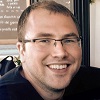 “My lab develops new technologies that interact with light at wavelengths just beyond what the eye can see, the shortwave infrared. Light in the shortwave infrared can penetrate through tissue, foliage and fog, but there are few molecules and materials that can capture or produce photons in this window. Our research studies the fundamental chemical physics that governs light absorption and emission in this window, with the goal of making new materials that explore the extremes of molecular properties. To design such chromophore systems requires a detailed understanding of the fate of photoexcitation, and methods to systematically design brighter, more emissive species. This proposal aims to study how to mitigate non-radiative decay pathways while enhancing radiative pathways, through the design of the local vibronic and photonic environment. In the classroom, my coworkers and I are developing an enhanced general chemistry course sequence for life-scientists, with the aim of replacing remedial coursework, known to lead to significant student STEM dropout. This course directs resources to least-served members of the UCLA community, and takes advantage of process-oriented guided inquiry learning, peer led team learning and context-rich problems for pre-health majors with the aim of keeping students on track to graduate with their peers.”
“My lab develops new technologies that interact with light at wavelengths just beyond what the eye can see, the shortwave infrared. Light in the shortwave infrared can penetrate through tissue, foliage and fog, but there are few molecules and materials that can capture or produce photons in this window. Our research studies the fundamental chemical physics that governs light absorption and emission in this window, with the goal of making new materials that explore the extremes of molecular properties. To design such chromophore systems requires a detailed understanding of the fate of photoexcitation, and methods to systematically design brighter, more emissive species. This proposal aims to study how to mitigate non-radiative decay pathways while enhancing radiative pathways, through the design of the local vibronic and photonic environment. In the classroom, my coworkers and I are developing an enhanced general chemistry course sequence for life-scientists, with the aim of replacing remedial coursework, known to lead to significant student STEM dropout. This course directs resources to least-served members of the UCLA community, and takes advantage of process-oriented guided inquiry learning, peer led team learning and context-rich problems for pre-health majors with the aim of keeping students on track to graduate with their peers.”
Joel F. Destino, chemistry, Creighton University – Bottoms Up: Investigating the Growth and Glass-Forming Properties of Germania-Containing Colloids
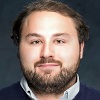 “From smartphones to NASA's Hubble Space Telescope, glass optical materials play a vital role in myriad technologies that improve our everyday life and enable state-of-the-art research endeavors. While the melt-quench approach to making glass typifies the traditional understanding of disordered, non-crystalline solids, it limits material design. Glasses prepared from synthetic colloids, from the bottom-up, offer several advantages, including control of colloid composition, morphology, size, and structure, enabling improved tunability of glass material density, chemical composition, and resulting optical properties. Furthermore, synthetic colloids can be adapted for use in 3D-printable glass optics, transforming the development of optics with properties unimaginable by conventional processes. My research will focus on novel colloid systems for making glasses containing germania, an essential silica glass dopant predominantly used for refractive-index modification in fiber optics and waveguides. Towards preparing silica-germania glasses from the bottom-up, we will investigate two fundamental research questions: what underlying chemistry directs amorphous colloid growth, and how does colloid design influence glass-forming properties? My educational plan will address barriers between chemistry and the real world, first by developing and implementing hands-on, at-home laboratory experiments, and second by creating new analytical chemistry curricula to remove conceptual barriers that decouple chemistry from critical social justice and inequity issues. I also aim to develop and implement a sustainable recruitment, training, and mentorship program for first-generation and underrepresented high school and undergraduate researchers.”
“From smartphones to NASA's Hubble Space Telescope, glass optical materials play a vital role in myriad technologies that improve our everyday life and enable state-of-the-art research endeavors. While the melt-quench approach to making glass typifies the traditional understanding of disordered, non-crystalline solids, it limits material design. Glasses prepared from synthetic colloids, from the bottom-up, offer several advantages, including control of colloid composition, morphology, size, and structure, enabling improved tunability of glass material density, chemical composition, and resulting optical properties. Furthermore, synthetic colloids can be adapted for use in 3D-printable glass optics, transforming the development of optics with properties unimaginable by conventional processes. My research will focus on novel colloid systems for making glasses containing germania, an essential silica glass dopant predominantly used for refractive-index modification in fiber optics and waveguides. Towards preparing silica-germania glasses from the bottom-up, we will investigate two fundamental research questions: what underlying chemistry directs amorphous colloid growth, and how does colloid design influence glass-forming properties? My educational plan will address barriers between chemistry and the real world, first by developing and implementing hands-on, at-home laboratory experiments, and second by creating new analytical chemistry curricula to remove conceptual barriers that decouple chemistry from critical social justice and inequity issues. I also aim to develop and implement a sustainable recruitment, training, and mentorship program for first-generation and underrepresented high school and undergraduate researchers.”
Daniela Fera, chemistry, Swarthmore College – Dissecting the Interactions and Conformations of Protein Kinases to Understand Biochemical Signaling
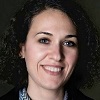 “Kinases act as molecular on/off switches in the cell and are important for intracellular communication. Our research will focus on a kinase called Lyn, which mediates signaling in specialized cells of the immune system, called B cells, which produce antibodies. These B cells interact with antigens such as viruses or bacteria on their outer surface, and this binding event gets transmitted inside the cell, altering the activities of kinases such as Lyn. Lyn is important because it mediates processes in B cells that differentiate the production of antibodies against foreign antigens as desired, versus ‘self’ which would lead to autoimmune disease. To date, there is no high-resolution 3D model of Lyn together with its regulatory modules. My research will involve performing a molecular ‘dissection’ of Lyn, using standard biochemistry and specialized biophysical and structural biology approaches, to determine the atomic-level features that keep Lyn “off” until triggered to turn “on.” This is important for understanding how B cells produce antibodies against the correct targets and how to modulate the pathways in cases in which they are deregulated. To improve student learning while providing authentic research experiences, my research goals will be incorporated into a biochemistry laboratory course in which students will think critically and act ‘like a scientist.’ Students will obtain both experimental and computational training, improve their science communication skills through presentation of data and discussion of primary literature, network with other scientists, and contribute to science through generation of new data and publications of their work.”
“Kinases act as molecular on/off switches in the cell and are important for intracellular communication. Our research will focus on a kinase called Lyn, which mediates signaling in specialized cells of the immune system, called B cells, which produce antibodies. These B cells interact with antigens such as viruses or bacteria on their outer surface, and this binding event gets transmitted inside the cell, altering the activities of kinases such as Lyn. Lyn is important because it mediates processes in B cells that differentiate the production of antibodies against foreign antigens as desired, versus ‘self’ which would lead to autoimmune disease. To date, there is no high-resolution 3D model of Lyn together with its regulatory modules. My research will involve performing a molecular ‘dissection’ of Lyn, using standard biochemistry and specialized biophysical and structural biology approaches, to determine the atomic-level features that keep Lyn “off” until triggered to turn “on.” This is important for understanding how B cells produce antibodies against the correct targets and how to modulate the pathways in cases in which they are deregulated. To improve student learning while providing authentic research experiences, my research goals will be incorporated into a biochemistry laboratory course in which students will think critically and act ‘like a scientist.’ Students will obtain both experimental and computational training, improve their science communication skills through presentation of data and discussion of primary literature, network with other scientists, and contribute to science through generation of new data and publications of their work.”
Alex Frañó, physics, University of California, San Diego – Creating Artificial Angstrom-scale Periodic Potentials Using X-ray Standing Waves and Enhancing Creativity in Physics Education
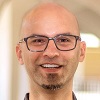 “The physics of solids are largely governed by a simple yet profound principle: electrons are in a spatially periodic potential. Means of controlling the shape and spacing of the periodic potential could render a new era in condensed matter physics, where arbitrary band structures could be designed. Interfering laser beams forming optical lattices produce such periodic potentials, but their wavelength is too large for electrons. The objective of this proposal is to create an analogous lattice using X-ray beams that modify electrons at the Angstrom scale. Using X-ray standing waves produced at X-ray free-electron lasers, we will design an experiment in which electrons inside a metal will be exposed to a periodic potential and thus open gaps at certain momenta values of their Fermi surface. If successful, this experiment will allow the creation of electronic band structures with arbitrary periodicities and shapes. We also intend to develop new classroom teaching and grade assessment techniques that enhance the role of cognitive creativity in physics. Our current approach to undergraduate physics education is too narrowly focused on solving textbook problems and does not cultivate the creative process involved in actual research. The methods we will develop to enhance creativity will be published in a peer-reviewed article, with particular focus on a new format for a graduate admissions test. This approach will give students from underrepresented gender and socioeconomic groups a chance to display skills that our current approach may ignore.”
“The physics of solids are largely governed by a simple yet profound principle: electrons are in a spatially periodic potential. Means of controlling the shape and spacing of the periodic potential could render a new era in condensed matter physics, where arbitrary band structures could be designed. Interfering laser beams forming optical lattices produce such periodic potentials, but their wavelength is too large for electrons. The objective of this proposal is to create an analogous lattice using X-ray beams that modify electrons at the Angstrom scale. Using X-ray standing waves produced at X-ray free-electron lasers, we will design an experiment in which electrons inside a metal will be exposed to a periodic potential and thus open gaps at certain momenta values of their Fermi surface. If successful, this experiment will allow the creation of electronic band structures with arbitrary periodicities and shapes. We also intend to develop new classroom teaching and grade assessment techniques that enhance the role of cognitive creativity in physics. Our current approach to undergraduate physics education is too narrowly focused on solving textbook problems and does not cultivate the creative process involved in actual research. The methods we will develop to enhance creativity will be published in a peer-reviewed article, with particular focus on a new format for a graduate admissions test. This approach will give students from underrepresented gender and socioeconomic groups a chance to display skills that our current approach may ignore.”
Thomas L. Gianetti, chemistry, University of Arizona – Developing a Photo-Rechargeable and Symmetrical Organic Redox Flow Battery
 “The integration of renewable energy is increasingly transitioning from goals to requirements in order to achieve zero-carbon emission in the decades to come. Solar and wind electricity production technologies are each relevant renewable energy responses to this need. However, being transitory in nature they require many adjustments for integration into power grids, including energy storage. While Li-ion batteries is the preferred technology, they are best suited for 4–6 h storage. In order to achieve zero-carbon emission, long-duration energy storage, 8-12 h storage, are required. To date, hydro pump storage is among the few technologies that can offer storage capacity for such a period of time. However, due to their size, geographical need, and the increasing scarcity of water, hydro pumps are controversial, and alternative long-duration storage technologies are required. Our research aims to develop an innovative battery that is cheap, safe, and can address the need for long-duration energy storage. Our educational plan is based on the idea that an understanding of underlying scientific and technical issues, as well as an appreciation for relevant economic, political, and legal dimensions, is necessary to form rational judgments on the complex challenges we face today, but that policy makers and scientists often lack the opportunity and expertise to successfully communicate. To that end, we are developing an interdisciplinary course, between the Colleges of Science and Law, that provides a platform in which both STEM and non-STEM students learn how to work and interact across fields with different backgrounds and levels of expertise. We aim to teach future generations of policy makers and scientists to communicate effectively with each other, as a single community.”
“The integration of renewable energy is increasingly transitioning from goals to requirements in order to achieve zero-carbon emission in the decades to come. Solar and wind electricity production technologies are each relevant renewable energy responses to this need. However, being transitory in nature they require many adjustments for integration into power grids, including energy storage. While Li-ion batteries is the preferred technology, they are best suited for 4–6 h storage. In order to achieve zero-carbon emission, long-duration energy storage, 8-12 h storage, are required. To date, hydro pump storage is among the few technologies that can offer storage capacity for such a period of time. However, due to their size, geographical need, and the increasing scarcity of water, hydro pumps are controversial, and alternative long-duration storage technologies are required. Our research aims to develop an innovative battery that is cheap, safe, and can address the need for long-duration energy storage. Our educational plan is based on the idea that an understanding of underlying scientific and technical issues, as well as an appreciation for relevant economic, political, and legal dimensions, is necessary to form rational judgments on the complex challenges we face today, but that policy makers and scientists often lack the opportunity and expertise to successfully communicate. To that end, we are developing an interdisciplinary course, between the Colleges of Science and Law, that provides a platform in which both STEM and non-STEM students learn how to work and interact across fields with different backgrounds and levels of expertise. We aim to teach future generations of policy makers and scientists to communicate effectively with each other, as a single community.”
Natalie M. Gosnell, astronomy, Colorado College – Constraining the Complexities of Stellar Activity with Sub-Subgiant Stars
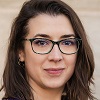 “Much of modern astrophysics relies on our understanding of how stars evolve, and strong stellar magnetic fields can alter this evolution in ways we are still discovering. One example of this alteration is seen in sub-subgiant stars, which are magnetically active subgiant stars with starspots. The amount of starspots covering the stellar surface can be a helpful proxy for the overall magnetic activity but is a difficult value to determine through observations. With the incredible data from the space-based Gaia and TESS missions we can now identify a population of sub-subgiants that is both nearby and relatively bright. These sources create a robust observational sample for testing against theoretical models. We will constrain the amount of starspots on these sub-subgiants by separating complex signals of the observed spectra into the starspot and surface components. These results are combined with information from the stellar light curve to benchmark the surface conditions of these stars. Together, this information will help test the next generation of models used to describe magnetically active stars. The educational component of this project addresses a lack of retention of underrepresented students in undergraduate physics through developing innovative embedded creativity exercises within the introductory physics sequence. This creativity curriculum is designed as an intervention to acknowledge creative processes as an important aspect of a student’s physics identity, reduce isolation and increase a sense of belonging, and provide new ways to engage with subject material that reinforces foundational knowledge – all factors that are linked to positive classroom culture as well as student persistence and resilience in physics.”
“Much of modern astrophysics relies on our understanding of how stars evolve, and strong stellar magnetic fields can alter this evolution in ways we are still discovering. One example of this alteration is seen in sub-subgiant stars, which are magnetically active subgiant stars with starspots. The amount of starspots covering the stellar surface can be a helpful proxy for the overall magnetic activity but is a difficult value to determine through observations. With the incredible data from the space-based Gaia and TESS missions we can now identify a population of sub-subgiants that is both nearby and relatively bright. These sources create a robust observational sample for testing against theoretical models. We will constrain the amount of starspots on these sub-subgiants by separating complex signals of the observed spectra into the starspot and surface components. These results are combined with information from the stellar light curve to benchmark the surface conditions of these stars. Together, this information will help test the next generation of models used to describe magnetically active stars. The educational component of this project addresses a lack of retention of underrepresented students in undergraduate physics through developing innovative embedded creativity exercises within the introductory physics sequence. This creativity curriculum is designed as an intervention to acknowledge creative processes as an important aspect of a student’s physics identity, reduce isolation and increase a sense of belonging, and provide new ways to engage with subject material that reinforces foundational knowledge – all factors that are linked to positive classroom culture as well as student persistence and resilience in physics.”
Christopher H. Hendon, chemistry, University of Oregon – Inorganic Defects in Metal-Organic Frameworks
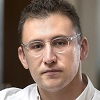 “Most chemical reactions are catalyzed by transition metals, namely the elements in the middle of the periodic table. Together with their ligands, these metals enable a broad array of reactivity. There is an ongoing interest to develop novel scaffolds to support these metals, potentially accessing new, more selective, or divergent reactivity. Metal-organic frameworks are one example of modern transition metal manifolds; materials constructed with the control and precision of molecules. The resultant materials feature an array of ordered pores, with the walls decorated in atomically precise clusters of transition metals and their oxides, supported by organic linkers. Generally, the observed chemical reactivity of these materials is attributed to the chemistry of these well-defined inorganic clusters. However, it is becoming increasingly evident that many of the reactive sites arise from defects (such as atomic vacancies, and additional atoms incorporated in the material). While experimental characterization of defects can be difficult, computational chemistry is well-suited to assess the properties of these crystallographic imperfections. We will study the chemical properties of vacancies and interstitial atoms in a family of metal-organic frameworks, to assess both the likelihood of their formation and their resultant emergent chemistry. We will marry these models with experiments to provide a comprehensive understanding of inorganic defects in metal-organic frameworks. In addition, we will be leveraging relationships with the specialty coffee industry to create an inclusive, comprehensive and remote general chemistry laboratory class taught using three accessible techniques – electrochemistry, spectroscopy, and titration – as applied to coffee extraction. The experiments will be safe, interesting, and rich, and will lay the foundation for a community-supported curriculum that reaches beyond coffee. The course will be made available to everyone, freely, to promote our pursuit of improved scientific literacy, in cafes, classrooms, and kitchens.”
“Most chemical reactions are catalyzed by transition metals, namely the elements in the middle of the periodic table. Together with their ligands, these metals enable a broad array of reactivity. There is an ongoing interest to develop novel scaffolds to support these metals, potentially accessing new, more selective, or divergent reactivity. Metal-organic frameworks are one example of modern transition metal manifolds; materials constructed with the control and precision of molecules. The resultant materials feature an array of ordered pores, with the walls decorated in atomically precise clusters of transition metals and their oxides, supported by organic linkers. Generally, the observed chemical reactivity of these materials is attributed to the chemistry of these well-defined inorganic clusters. However, it is becoming increasingly evident that many of the reactive sites arise from defects (such as atomic vacancies, and additional atoms incorporated in the material). While experimental characterization of defects can be difficult, computational chemistry is well-suited to assess the properties of these crystallographic imperfections. We will study the chemical properties of vacancies and interstitial atoms in a family of metal-organic frameworks, to assess both the likelihood of their formation and their resultant emergent chemistry. We will marry these models with experiments to provide a comprehensive understanding of inorganic defects in metal-organic frameworks. In addition, we will be leveraging relationships with the specialty coffee industry to create an inclusive, comprehensive and remote general chemistry laboratory class taught using three accessible techniques – electrochemistry, spectroscopy, and titration – as applied to coffee extraction. The experiments will be safe, interesting, and rich, and will lay the foundation for a community-supported curriculum that reaches beyond coffee. The course will be made available to everyone, freely, to promote our pursuit of improved scientific literacy, in cafes, classrooms, and kitchens.”
Alexis C. Komor, chemistry, University of California, San Diego – Harnessing Precision Genome Editing Tools to Study DNA Repair Proteins in Live Cells
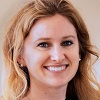 “DNA repair is a fundamental process that is necessary for all life on earth, and a deep mechanistic understanding of how DNA repair proteins function to recognize and repair different types of DNA damage is of great importance to researchers. Mechanistically elucidating how mutations in genes that encode for key DNA repair proteins have significantly expanded our basic knowledge of how DNA repair operates. However, several key barriers have prevented researchers from studying these mutant DNA repair proteins in truly physiologically relevant contexts. Our research program seeks to leverage our expertise in genome editing, nucleic acid chemistry, and chemical biology to study mutant DNA repair proteins in high-throughput in their native environment of the cell to expand our fundamental knowledge of how DNA repair protects our genomes from damage. Although genome editing is a highly impactful, quickly burgeoning field that has applications in a broad range of scientific discipline, the field has expanded so rapidly that university curricula have not kept pace. To address our students’ pressing need for courses on how to use these technologies responsibly and effectively in their own research project, I will be implementing and optimizing UCSD’s first genome editing course, teaching the subject matter using a combined theoretical and practical approach to build student knowledge from the ground up. The ultimate goal is to equip students with the requisite knowledge to design their own genome editing research experiments and appropriately analyze their data from these experiments.”
“DNA repair is a fundamental process that is necessary for all life on earth, and a deep mechanistic understanding of how DNA repair proteins function to recognize and repair different types of DNA damage is of great importance to researchers. Mechanistically elucidating how mutations in genes that encode for key DNA repair proteins have significantly expanded our basic knowledge of how DNA repair operates. However, several key barriers have prevented researchers from studying these mutant DNA repair proteins in truly physiologically relevant contexts. Our research program seeks to leverage our expertise in genome editing, nucleic acid chemistry, and chemical biology to study mutant DNA repair proteins in high-throughput in their native environment of the cell to expand our fundamental knowledge of how DNA repair protects our genomes from damage. Although genome editing is a highly impactful, quickly burgeoning field that has applications in a broad range of scientific discipline, the field has expanded so rapidly that university curricula have not kept pace. To address our students’ pressing need for courses on how to use these technologies responsibly and effectively in their own research project, I will be implementing and optimizing UCSD’s first genome editing course, teaching the subject matter using a combined theoretical and practical approach to build student knowledge from the ground up. The ultimate goal is to equip students with the requisite knowledge to design their own genome editing research experiments and appropriately analyze their data from these experiments.”
Eli M. Levenson-Falk, physics, University of Southern California – Creating Custom Quantum Environments with Superconducting Circuits (For Beginners)
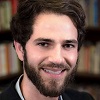
Rosario Porras-Aguilar, physics, University of North Carolina at Charlotte – Label-Free Reconfigurable Microscopy with High Specificity
 “In the near future, imaging systems will be constructed by active optical elements that will provide more powerful imaging capabilities, ranging from microscopes to telescopes to cameras. The human eye offers a perfect example of an active optical system. It uses a single lens and iris to adjust, almost instantaneously, to visualize objects in various levels of illumination and at distances ranging from a few centimeters to hundreds of meters. This project aims to fill the public health need for faster, more accurate, and more consistent pathology results and diagnoses by providing a new generation of active, reconfigurable microscopes that adapt themselves to adjust the visibility of a microscopic structure without the need to modify the biological sample. This approach will offer quantitative, label-free data that will drive the automation of microscopic analysis of biological samples. The work also offers the potential for quantitative methods to detect and measure cellular structures with high specificity. This will accelerate research in microbiology by shortening the extended periods of time staining biosamples. Ultimately, we expect this research to significantly improve our ability to quantify samples in pathology and provide a new generation of imaging systems for microscopy. My educational plan includes opportunities for hands-on experiences with optics and photonics for students at various education levels. As part of my commitment to increasing diversity and inclusivity in this field, I will offer students opportunities to gain role models and mentors who break stereotypes and foster young women and other underrepresented groups in STEM-related areas.”
“In the near future, imaging systems will be constructed by active optical elements that will provide more powerful imaging capabilities, ranging from microscopes to telescopes to cameras. The human eye offers a perfect example of an active optical system. It uses a single lens and iris to adjust, almost instantaneously, to visualize objects in various levels of illumination and at distances ranging from a few centimeters to hundreds of meters. This project aims to fill the public health need for faster, more accurate, and more consistent pathology results and diagnoses by providing a new generation of active, reconfigurable microscopes that adapt themselves to adjust the visibility of a microscopic structure without the need to modify the biological sample. This approach will offer quantitative, label-free data that will drive the automation of microscopic analysis of biological samples. The work also offers the potential for quantitative methods to detect and measure cellular structures with high specificity. This will accelerate research in microbiology by shortening the extended periods of time staining biosamples. Ultimately, we expect this research to significantly improve our ability to quantify samples in pathology and provide a new generation of imaging systems for microscopy. My educational plan includes opportunities for hands-on experiences with optics and photonics for students at various education levels. As part of my commitment to increasing diversity and inclusivity in this field, I will offer students opportunities to gain role models and mentors who break stereotypes and foster young women and other underrepresented groups in STEM-related areas.”
Davit Potoyan, chemistry, Iowa State University – Uncovering Principles of Bio-molecular Condensation: from Single Molecules to Cellular Organelles
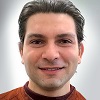 “This award will enable us to double our research efforts to uncover the molecular grammar of bio-molecular condensation, a phenomenon by which proteins and nucleic acids segregate to form nanoscale fluid-like droplets inside living cells. The latest experiments have shown the ubiquity and breathtaking variety of these fluid biomolecular structures, which permeate virtually every corner of the cell -- from the nucleus to cytoplasm. The mechanisms by which these structures form and are used in cellular functions remain poorly understood. Our lab uses state of the art multi-scale computational, bioinformatics, and machine learning methods to learn the molecular grammar of protein sequences, encoding distinct phases both in living cells and in test tubes. Our findings will help fight against neurological disorders such as Alzheimer's and Parkinson's' disease, which at the molecular level appear to emerge from a process of protein aggregation, a process in which liquid-like condensates turn into solid-like clumps. Additionally, our research findings can open the door for engineering biomolecular condensates for synthetic and biomedical applications such as catalysis, efficient harvesting of green energy, and drug delivery. As we see an ever-widening gap between traditional classroom education and modern computing and data practices in the real world, we will also be supplementing our efforts to bring modern interactive computing- and collaboration-based learning to chemistry classrooms. By blending interactive-computing tools with the traditional chemistry curriculum, we will create an engaging and inclusive learning environment for chemistry majors that will better prepare them for a future job market that appears to be even more dominated by computing.”
“This award will enable us to double our research efforts to uncover the molecular grammar of bio-molecular condensation, a phenomenon by which proteins and nucleic acids segregate to form nanoscale fluid-like droplets inside living cells. The latest experiments have shown the ubiquity and breathtaking variety of these fluid biomolecular structures, which permeate virtually every corner of the cell -- from the nucleus to cytoplasm. The mechanisms by which these structures form and are used in cellular functions remain poorly understood. Our lab uses state of the art multi-scale computational, bioinformatics, and machine learning methods to learn the molecular grammar of protein sequences, encoding distinct phases both in living cells and in test tubes. Our findings will help fight against neurological disorders such as Alzheimer's and Parkinson's' disease, which at the molecular level appear to emerge from a process of protein aggregation, a process in which liquid-like condensates turn into solid-like clumps. Additionally, our research findings can open the door for engineering biomolecular condensates for synthetic and biomedical applications such as catalysis, efficient harvesting of green energy, and drug delivery. As we see an ever-widening gap between traditional classroom education and modern computing and data practices in the real world, we will also be supplementing our efforts to bring modern interactive computing- and collaboration-based learning to chemistry classrooms. By blending interactive-computing tools with the traditional chemistry curriculum, we will create an engaging and inclusive learning environment for chemistry majors that will better prepare them for a future job market that appears to be even more dominated by computing.”
Tyler D. Robinson, astronomy, Northern Arizona University – Understanding the True Utility of Prior Mass Constraints in Characterizing Exoplanet Atmospheres and Diversifying STEM at NAU
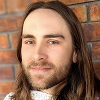 “Exoplanetary science is on the cusp of characterizing the first potentially Earth-like worlds orbiting nearby stars. Under-study space mission concepts would push this exploration even further by studying many potentially habitable exoplanets orbiting other suns. However, when investigating these potentially Earth-like worlds, it remains unclear just how important it is to know difficult-to-observe details of the planetary environment, such as the mass of the planet. My research seeks to deeply understand the true value of precursor constraints for Earth-like exoplanetary characterization missions and explore the true utility of prior mass constraints in characterizing a diversity of exoplanet atmospheres in reflected light, taking advantage of in-hand, novel, validated planetary atmospheric characterization and retrieval tools. Alongside this research, I will also study the value of interdisciplinary approaches in undergraduate general-education courses while developing an astronomy- and diversity-focused undergraduate research mentorship program at Northern Arizona University.”
“Exoplanetary science is on the cusp of characterizing the first potentially Earth-like worlds orbiting nearby stars. Under-study space mission concepts would push this exploration even further by studying many potentially habitable exoplanets orbiting other suns. However, when investigating these potentially Earth-like worlds, it remains unclear just how important it is to know difficult-to-observe details of the planetary environment, such as the mass of the planet. My research seeks to deeply understand the true value of precursor constraints for Earth-like exoplanetary characterization missions and explore the true utility of prior mass constraints in characterizing a diversity of exoplanet atmospheres in reflected light, taking advantage of in-hand, novel, validated planetary atmospheric characterization and retrieval tools. Alongside this research, I will also study the value of interdisciplinary approaches in undergraduate general-education courses while developing an astronomy- and diversity-focused undergraduate research mentorship program at Northern Arizona University.”
Brian J. Shuve, physics, Harvey Mudd College – Matter-Antimatter Asymmetry from Dark Matter Freeze-In
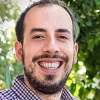 "My scientific research seeks to address two seemingly unrelated problems in our current theory of elementary particle physics: the nature of the dark matter that comprises 80% of the matter in the universe but does not give off light and is not made of any of the known particles; and the matter-antimatter asymmetry, which is a puzzle arising from the fact that the known types of matter (protons, neutrons, electrons) all have corresponding antiparticles (antiprotons, antineutrons, positrons) and yet we are made exclusively out of matter and not antimatter … so where did the antimatter go? In 2020, I developed (in collaboration with David Tucker-Smith of Williams College) a new theoretical framework that could simultaneously explain both dark matter and the matter-antimatter asymmetry. An initial study showed the theory has promising features that could allow it to be experimentally verified or refuted in the coming years, but the majority of manifestations of this theory have yet to be studied. My Cottrell project is a systematic derivation and exploration of the many facets of this theory, and my students and I will be working to fully uncover the exciting new predictions of this theory and determine what new tests should be done to discover it. In addition, we will develop and assess the efficacy of interactive applets for the teaching of abstract concepts in an upper-division theoretical mechanics course for physics majors. While such tools are widely used in lower-division physics classes and known to be effective, there is a dearth of similar resources for students once they progress deeper into the major. This project will develop important curricular resources that can be used in the teaching of this class at institutions across the country, as well as for self-learners."
"My scientific research seeks to address two seemingly unrelated problems in our current theory of elementary particle physics: the nature of the dark matter that comprises 80% of the matter in the universe but does not give off light and is not made of any of the known particles; and the matter-antimatter asymmetry, which is a puzzle arising from the fact that the known types of matter (protons, neutrons, electrons) all have corresponding antiparticles (antiprotons, antineutrons, positrons) and yet we are made exclusively out of matter and not antimatter … so where did the antimatter go? In 2020, I developed (in collaboration with David Tucker-Smith of Williams College) a new theoretical framework that could simultaneously explain both dark matter and the matter-antimatter asymmetry. An initial study showed the theory has promising features that could allow it to be experimentally verified or refuted in the coming years, but the majority of manifestations of this theory have yet to be studied. My Cottrell project is a systematic derivation and exploration of the many facets of this theory, and my students and I will be working to fully uncover the exciting new predictions of this theory and determine what new tests should be done to discover it. In addition, we will develop and assess the efficacy of interactive applets for the teaching of abstract concepts in an upper-division theoretical mechanics course for physics majors. While such tools are widely used in lower-division physics classes and known to be effective, there is a dearth of similar resources for students once they progress deeper into the major. This project will develop important curricular resources that can be used in the teaching of this class at institutions across the country, as well as for self-learners."
Marcelle Soares-Santos, physics, University of Michigan – Cosmology with Merging Black Holes and Neutron Stars
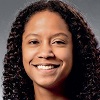 “My project will establish a cosmology program to perform precise and accurate measurements of the rate of expansion of the universe using mergers of binary neutron stars and black holes. The program will use multimessenger data from DESI and LSST sky surveys and from the gravitational wave detectors LIGO and Virgo. Results of the research will shed light upon the issue of discrepant measurements from traditional methods such as supernovae and the cosmic microwave background, a key problem in modern cosmology. I will also implement a virtual-reality educational application aimed at improving the experience of students and instructors in online teaching environments, which became ubiquitous in higher education due to the global pandemic. It aims to change the experience shared widely by the academic community that, compared to traditional settings, virtual teaching takes more work, is less engaging, undermines assessment, and exacerbates inequities.”
“My project will establish a cosmology program to perform precise and accurate measurements of the rate of expansion of the universe using mergers of binary neutron stars and black holes. The program will use multimessenger data from DESI and LSST sky surveys and from the gravitational wave detectors LIGO and Virgo. Results of the research will shed light upon the issue of discrepant measurements from traditional methods such as supernovae and the cosmic microwave background, a key problem in modern cosmology. I will also implement a virtual-reality educational application aimed at improving the experience of students and instructors in online teaching environments, which became ubiquitous in higher education due to the global pandemic. It aims to change the experience shared widely by the academic community that, compared to traditional settings, virtual teaching takes more work, is less engaging, undermines assessment, and exacerbates inequities.”
Ruby May A. Sullan, chemistry, University of Toronto – Scarborough – Multifunctional and Stimuli-Responsive Nanotherapeutic Platform for Targeted Disruption of Bacterial Biofilms
 “Antimicrobial resistance (AMR) is a global scale crisis and could very well become the next pandemic. One of the leading causes of AMR is highly recalcitrant bacterial biofilms. Our group joins the global fight on AMR by developing multifunctional and biocompatible nanomaterial-based therapeutics (nanotherapeutics). We engineer nanomaterials that can break through the biofilm barrier ― and kill bacteria in multiple ways. Our rationale is that if we can confuse bacteria by killing them using several different strategies, they will have difficulty evolving quickly to develop resistance. As the design of our nanotherapeutics is highly modular, with multiple and synergistic killing mechanisms, it can be broadly adapted to a wide spectrum of pathogens. Concurrently, we are also developing nanoscale analytical tools that will help elucidate the mechanism of action of our engineered nanomaterial-based antimicrobials. Mechanistic insights gained from this research endeavor will guide our efforts in increasing the efficacy of these antimicrobial agents. Complementing our nanoscale research, my educational proposal is to address a gap in undergraduate laboratory curriculum that would allow students to study and probe surfaces and materials at the nanoscale. It will focus on surface and interfacial science to provide early undergraduate students hands-on research experience with a nanoscale perspective. As part of their community-based learning, students will get to participate in a beyond-the-classroom program where they will showcase their research to peers and younger students, with the goal of helping them (re)think of themselves as scientists.”
“Antimicrobial resistance (AMR) is a global scale crisis and could very well become the next pandemic. One of the leading causes of AMR is highly recalcitrant bacterial biofilms. Our group joins the global fight on AMR by developing multifunctional and biocompatible nanomaterial-based therapeutics (nanotherapeutics). We engineer nanomaterials that can break through the biofilm barrier ― and kill bacteria in multiple ways. Our rationale is that if we can confuse bacteria by killing them using several different strategies, they will have difficulty evolving quickly to develop resistance. As the design of our nanotherapeutics is highly modular, with multiple and synergistic killing mechanisms, it can be broadly adapted to a wide spectrum of pathogens. Concurrently, we are also developing nanoscale analytical tools that will help elucidate the mechanism of action of our engineered nanomaterial-based antimicrobials. Mechanistic insights gained from this research endeavor will guide our efforts in increasing the efficacy of these antimicrobial agents. Complementing our nanoscale research, my educational proposal is to address a gap in undergraduate laboratory curriculum that would allow students to study and probe surfaces and materials at the nanoscale. It will focus on surface and interfacial science to provide early undergraduate students hands-on research experience with a nanoscale perspective. As part of their community-based learning, students will get to participate in a beyond-the-classroom program where they will showcase their research to peers and younger students, with the goal of helping them (re)think of themselves as scientists.”
Alexandra Velian, chemistry, University of Washington – Synthesis of Functional Metal Chalcogenide Lattices Using Symmetry-Encoded, Atomically Precise Clusters
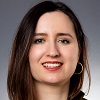 “Empirically developed, traditional heterogeneous catalysts are ill-defined and energy-inefficient. Single atom catalysts are poised to overcome existential limitations of traditional catalysts and promise solutions to environmentally relevant catalytic sequences of global importance. Our research addresses one of the main limitations of single atom catalysts: their synthesis. Specifically, our group seeks to develop methods broadly applicable to the synthesis of conductive, high-surface area and scalable atomically defined materials with pre- encoded, low-coordinate single atom active sites. Our strategy relies on the use of symmetry-encoded, designer building blocks prepared via the surface functionalization of metal chalcogenide clusters with transition metals. This project is focused on elucidating the origin of an unusual redox-switchable, allosteric site-differentiation of edge sites in designer transition metal chalcogenide nanoclusters introduced by our group, and harnessing it to guide reactivity of edge sites, and dimensionality of self-assembled lattices. This work will enable our long-term research goal of creating deterministic and modular syntheses for single atom catalysts. Our educational plan aims to incorporate active learning and involvement in research, two strategies demonstrated to narrow the achievement gap and increase retention of underserved students in STEM. We will integrate mentorship components, engagement in research, immersion into the scientific community at the University of Washington, as well as implementation of active learning principles in science teaching designed to reduce achievement gaps and promote equity.”
“Empirically developed, traditional heterogeneous catalysts are ill-defined and energy-inefficient. Single atom catalysts are poised to overcome existential limitations of traditional catalysts and promise solutions to environmentally relevant catalytic sequences of global importance. Our research addresses one of the main limitations of single atom catalysts: their synthesis. Specifically, our group seeks to develop methods broadly applicable to the synthesis of conductive, high-surface area and scalable atomically defined materials with pre- encoded, low-coordinate single atom active sites. Our strategy relies on the use of symmetry-encoded, designer building blocks prepared via the surface functionalization of metal chalcogenide clusters with transition metals. This project is focused on elucidating the origin of an unusual redox-switchable, allosteric site-differentiation of edge sites in designer transition metal chalcogenide nanoclusters introduced by our group, and harnessing it to guide reactivity of edge sites, and dimensionality of self-assembled lattices. This work will enable our long-term research goal of creating deterministic and modular syntheses for single atom catalysts. Our educational plan aims to incorporate active learning and involvement in research, two strategies demonstrated to narrow the achievement gap and increase retention of underserved students in STEM. We will integrate mentorship components, engagement in research, immersion into the scientific community at the University of Washington, as well as implementation of active learning principles in science teaching designed to reduce achievement gaps and promote equity.”
Rongsheng (Ross) Wang, chemistry, Temple University – A Fluorine Displacement Based Bioorthogonal Labeling Approach to Interrogate Non-Histone Substrates of “Histone” Deacetylases
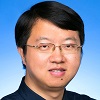 “Enzymes known as histone deacetylases (HDACs) were initially discovered and named as modifiers of histones, a type of proteins involved in the structural organization of DNA. HDACs have long been observed to mediate cellular homeostasis and regulate diverse cellular processes such as activation, proliferation, and migration. Mounting evidence has recently begun to reveal that nonhistone protein substrates play pivotal roles in these events, yet little is known about the identity of these substrates or the involved signaling networks due to the lack of an efficient and broadly applicable research tool. My group seeks to understand these nonhistone targets by inventing fluorine-displacement-based chemical labeling reactions utilizing reactants closer in size and shape to the natural substrates than the bulky groups used in existing “click chemistry” labeling strategy. These reactions are bioorthogonal, occurring efficiently in biological solutions without interfering with normal biological processes. This labeling approach yields a more sensitive target detection than antibody-based common biological methods. Furthermore, we are exploring cutting-edge techniques in cell biology to characterize these protein substrates and interrogate their roles in cell activation and migration. This approach will further our understanding of the impact of deacetylation on fundamental cellular events and the related human diseases in the long run. Concurrently, we are incorporating the deacetylation research based on our bioorthogonal labeling strategy into a second-year undergraduate laboratory course. This research-based, active learning experience will expose early-stage college students to the design and utilization of chemical probes to answer biologically important questions, which we hope will result in greater retention and recruitment of students interested in interdisciplinary science fields.'
“Enzymes known as histone deacetylases (HDACs) were initially discovered and named as modifiers of histones, a type of proteins involved in the structural organization of DNA. HDACs have long been observed to mediate cellular homeostasis and regulate diverse cellular processes such as activation, proliferation, and migration. Mounting evidence has recently begun to reveal that nonhistone protein substrates play pivotal roles in these events, yet little is known about the identity of these substrates or the involved signaling networks due to the lack of an efficient and broadly applicable research tool. My group seeks to understand these nonhistone targets by inventing fluorine-displacement-based chemical labeling reactions utilizing reactants closer in size and shape to the natural substrates than the bulky groups used in existing “click chemistry” labeling strategy. These reactions are bioorthogonal, occurring efficiently in biological solutions without interfering with normal biological processes. This labeling approach yields a more sensitive target detection than antibody-based common biological methods. Furthermore, we are exploring cutting-edge techniques in cell biology to characterize these protein substrates and interrogate their roles in cell activation and migration. This approach will further our understanding of the impact of deacetylation on fundamental cellular events and the related human diseases in the long run. Concurrently, we are incorporating the deacetylation research based on our bioorthogonal labeling strategy into a second-year undergraduate laboratory course. This research-based, active learning experience will expose early-stage college students to the design and utilization of chemical probes to answer biologically important questions, which we hope will result in greater retention and recruitment of students interested in interdisciplinary science fields.'
Leah S. Witus, chemistry, Macalester College – Investigation of Beta-Hairpin Hydrolytic Peptides and Development of an Advanced Undergraduate Scientific Communication Course
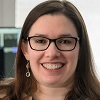 “Peptide catalysts – very short proteins that catalyze chemical reactions – are important because they have many practical applications and can provide insight for understanding more complex systems. My lab studies how the folded structure of short peptides into structures called β-hairpins affects their activity as catalysts of ester hydrolysis reactions. β-hairpin peptides can be used to spatially orient reactive groups, but there is a need to more fully explore their sequence-catalytic activity relationship to design β-hairpin catalysts for important reactions and applications. We propose to address this gap by investigating the effects of turn residues, cross-strand interactions, and reactive dyad positioning on β-hairpin ester hydrolysis catalysts. These studies will increase fundamental knowledge about catalytic peptide design and will help us and others apply the design principles learned from this work to interesting and important substrates. My educational plan will address the pressing need to train scientists as ethical and effective communicators through the development of a Macalester College course called ‘Scientific Communication for Chemists.’ This course will give students the opportunity to gain training in professional and public scientific communication by dedicating course time to the particular conventions, challenges, and opportunities of communicating as a scientist.”
“Peptide catalysts – very short proteins that catalyze chemical reactions – are important because they have many practical applications and can provide insight for understanding more complex systems. My lab studies how the folded structure of short peptides into structures called β-hairpins affects their activity as catalysts of ester hydrolysis reactions. β-hairpin peptides can be used to spatially orient reactive groups, but there is a need to more fully explore their sequence-catalytic activity relationship to design β-hairpin catalysts for important reactions and applications. We propose to address this gap by investigating the effects of turn residues, cross-strand interactions, and reactive dyad positioning on β-hairpin ester hydrolysis catalysts. These studies will increase fundamental knowledge about catalytic peptide design and will help us and others apply the design principles learned from this work to interesting and important substrates. My educational plan will address the pressing need to train scientists as ethical and effective communicators through the development of a Macalester College course called ‘Scientific Communication for Chemists.’ This course will give students the opportunity to gain training in professional and public scientific communication by dedicating course time to the particular conventions, challenges, and opportunities of communicating as a scientist.”
Joseph M. Zadrozny, chemistry, Colorado State University – Harnessing Ligand-Shell Nuclear Spins to Control Molecular Spin Coherence
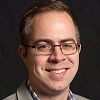 “The magnetic moments of single metal ions are a vital resource for next-generation quantum technologies. One of the most essential properties for these applications is the superposition, a strange state where a metal-ion magnetic moment is pointing in multiple directions simultaneously. That superposition state is essential for quantum applications, but we do not yet understand how to control the superposition, especially in noisy environments such as the interiors of devices or room-temperature solutions. Indeed, in noisy environments the superposition state will quickly evaporate, and thus cannot be used. The research goal of this project is to understand how to fortify these strange superposition states against environmental noise by design. The educational component of the work is to synergize the graduate and undergraduate level inorganic coursework at Colorado State University. Specifically, the project will prepare lab classes that integrate the advanced undergraduate synthetic inorganic laboratory and the advanced, graduate-level courses in physical methods of inorganic chemistry. By integrating these two tracks, we will enable undergraduates to participate in research that is close to the frontiers of inorganic chemistry (rather than standard, textbook recipes) and provide valuable training in advanced characterization techniques to first-year graduate students.”
“The magnetic moments of single metal ions are a vital resource for next-generation quantum technologies. One of the most essential properties for these applications is the superposition, a strange state where a metal-ion magnetic moment is pointing in multiple directions simultaneously. That superposition state is essential for quantum applications, but we do not yet understand how to control the superposition, especially in noisy environments such as the interiors of devices or room-temperature solutions. Indeed, in noisy environments the superposition state will quickly evaporate, and thus cannot be used. The research goal of this project is to understand how to fortify these strange superposition states against environmental noise by design. The educational component of the work is to synergize the graduate and undergraduate level inorganic coursework at Colorado State University. Specifically, the project will prepare lab classes that integrate the advanced undergraduate synthetic inorganic laboratory and the advanced, graduate-level courses in physical methods of inorganic chemistry. By integrating these two tracks, we will enable undergraduates to participate in research that is close to the frontiers of inorganic chemistry (rather than standard, textbook recipes) and provide valuable training in advanced characterization techniques to first-year graduate students.”
Gail Zasowski, astronomy, University of Utah – Understanding the Chemical Enrichment of Our Universe: Unifying Evidence from the Milky Way and Other Galaxies
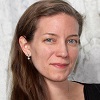 “The 99.5% of Earth’s mass that is not made of hydrogen was actually forged in generations of stars and supernovae explosions over billions of years. This same “stardust” is responsible for most of what we observe in the universe: from super-clusters of galaxies to stars and planets in our own galaxy. In order to understand the evolution of the universe, we have to understand just how it has been enriched in the heavier elements by the stars and gas that reside inside galaxies. My research takes advantage of our unique position within our Milky Way galaxy to use the chemistry and ages of its stars, and galaxies whose stars and gas share a similar history, to study galaxy evolution on scales that are too small to resolve throughout most of the universe. With a wide range of datasets, my group and I explore how and when the Milky Way's own stars enriched its interstellar gas, and how to best use the Milky Way to understand other similar galaxies (and vice versa). My educational plan uses peer-mentoring and peer-teaching, some of the most powerful methods for building a sense of community among STEM majors and for supporting students on the path to their degrees. This program will support the foundation of a new mentoring and education network in the Physics & Astronomy Department at the University of Utah. This initiative is designed to facilitate positive science identities, greater success in and out of the classroom, and a stronger sense of community for all students, regardless of their background or path to the major.”
“The 99.5% of Earth’s mass that is not made of hydrogen was actually forged in generations of stars and supernovae explosions over billions of years. This same “stardust” is responsible for most of what we observe in the universe: from super-clusters of galaxies to stars and planets in our own galaxy. In order to understand the evolution of the universe, we have to understand just how it has been enriched in the heavier elements by the stars and gas that reside inside galaxies. My research takes advantage of our unique position within our Milky Way galaxy to use the chemistry and ages of its stars, and galaxies whose stars and gas share a similar history, to study galaxy evolution on scales that are too small to resolve throughout most of the universe. With a wide range of datasets, my group and I explore how and when the Milky Way's own stars enriched its interstellar gas, and how to best use the Milky Way to understand other similar galaxies (and vice versa). My educational plan uses peer-mentoring and peer-teaching, some of the most powerful methods for building a sense of community among STEM majors and for supporting students on the path to their degrees. This program will support the foundation of a new mentoring and education network in the Physics & Astronomy Department at the University of Utah. This initiative is designed to facilitate positive science identities, greater success in and out of the classroom, and a stronger sense of community for all students, regardless of their background or path to the major.”
